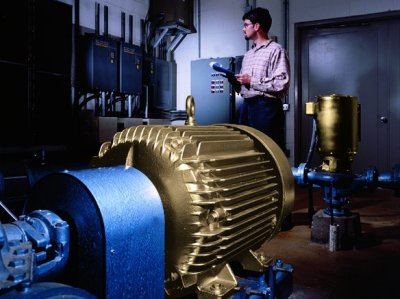Europe`s motor-makers decide to back mandatory efficiency levels
Europe’s motor manufacturers have agreed to support an initiative that could lead to minimum efficiency levels being imposed on motors sold in the European Union. At a meeting in China in June, a delegate from CEMEP, the organisation that represents European motor-makers, announced that its members have decided to support minimum energy performance standards (Meps) for motors at the Eff1 efficiency level under the EU’s Ecodesign for Energy-Using Products (EuP) Directive.
The announcement marks a change of heart for CEMEP - the Committee of Manufacturers of Electrical Machines and Power Electronics - which has previously been opposed any form of mandatory minimum efficiency levels. In the 1990s, when the European Commission was drawing up the current efficiency classification scheme, which splits motor efficiencies into three bands (Eff 1, 2 and 3), CEMEP only agreed to participate on the basis that the scheme was voluntary and that there would be no pressure on buyers to choose more efficient machines.
One result of this voluntary approach, is that eight years after the Eff scheme came into force in 1999, the highest-efficiency Eff1 motors represent only about 10-12% of motors being sold in the EU - and appear to have plateaued at this level.
In the US, by contrast, where motor-makers agreed to mandatory minimum efficiency levels in the 1990s, almost all general-purpose induction motors now meet the EPAct efficiency standard, which is similar to the European Eff1 level.
While CEMEP is now agreeing to accept Eff1 motors as the minimum level, the US is already drawing up new legislation which could lead to much higher minimum levels of efficiency being enforced in the US. The new proposals are based on the NEMA Premium efficiency specification which cuts losses by around 15% compared to the current EPAct models. The US is also looking at broadening the scope of its efficiency legislation to include more types of motor.

NEMA Premium motors (such as the Baldor machine shown above) already account for about a quarter of 1.5 million poly-phase motors sold in the US each year. The US Department of Energy has estimated that widespread use of NEMA Premium motors could cut US industry’s electricity consumption by 5,800GWh over a ten-year period. This is equivalent to cutting carbon emissions by 80 million tonnes - the same as would be achieved by removing 16 million cars from American roads.
The EU’s EuP directive, adopted in 2005, gives the European Commission the mandate to set requirements, such as efficiency levels, for energy-using products. If products don’t meet these requirements, they will not be allowed to be sold in the EU.
Last year, the Commission launched preparatory studies for 14 groups of products, including air-conditioning systems, televisions, computers, commercial refrigeration, domestic washing machines - and electric motors, pumps and fans. This year, five more groups were added, including vacuum cleaners, domestic lighting and laundry dryers.
The timetable for the motors, pumps and fans category, calls for draft measures to be published later this year, and for these measures to be voted on and agreed by the end of next year.
CEMEP’s decision to support mandatory minimum efficiency levels was announced at EEMODS ’07 - the fifth international conference on Energy Efficiency of Motor-Driven Systems - which took place in China in June.
Another speaker at EEMODS ’07, Prof Anibal de Almeida from the University of Coimbra in Portugal, revealed some preliminary results from the EuP motors study, showing that the lifecycle costs of premium efficiency motors are 2–11% lower than those of standard motors.
Paul Waide, a senior energy efficiency advisor for the International Energy Agency, told the conference that more efficient motor systems could cut the global demand for electricity by an estimated 7%.
Also at the Chinese meeting, a representative of the IEC - the International Electrotechnical Commission - revealed details of a proposed new classification system for motor efficiencies (IEC 60034-30) that could include a new Super Premium efficiency level.
According to the SEEM (Standards for Energy Efficiency of Electric Motor Systems) initiative, ten countries have now imposed mandatory minimum efficiency levels for motors. Between them, these countries account for 47% of the world’s electricity consumption, and 34% of its population. SEEEM is campaigning to raise these figures to 80% of electricity demand and 66% of the global population, by persuading the world’s 20 largest countries to adopt minimum efficiency levels.





